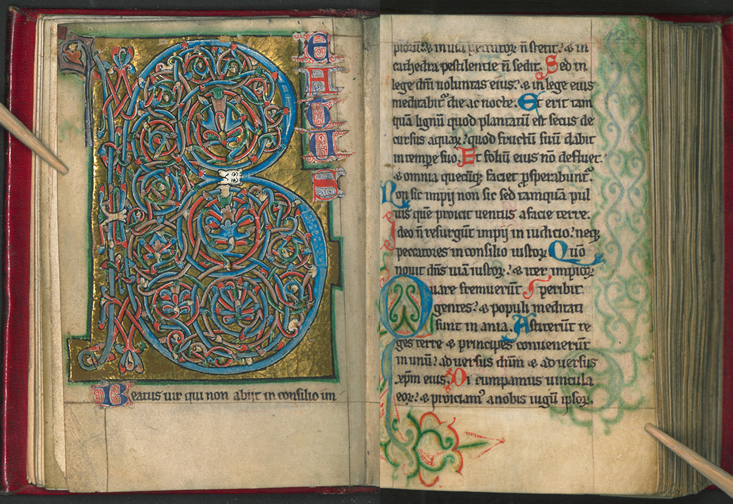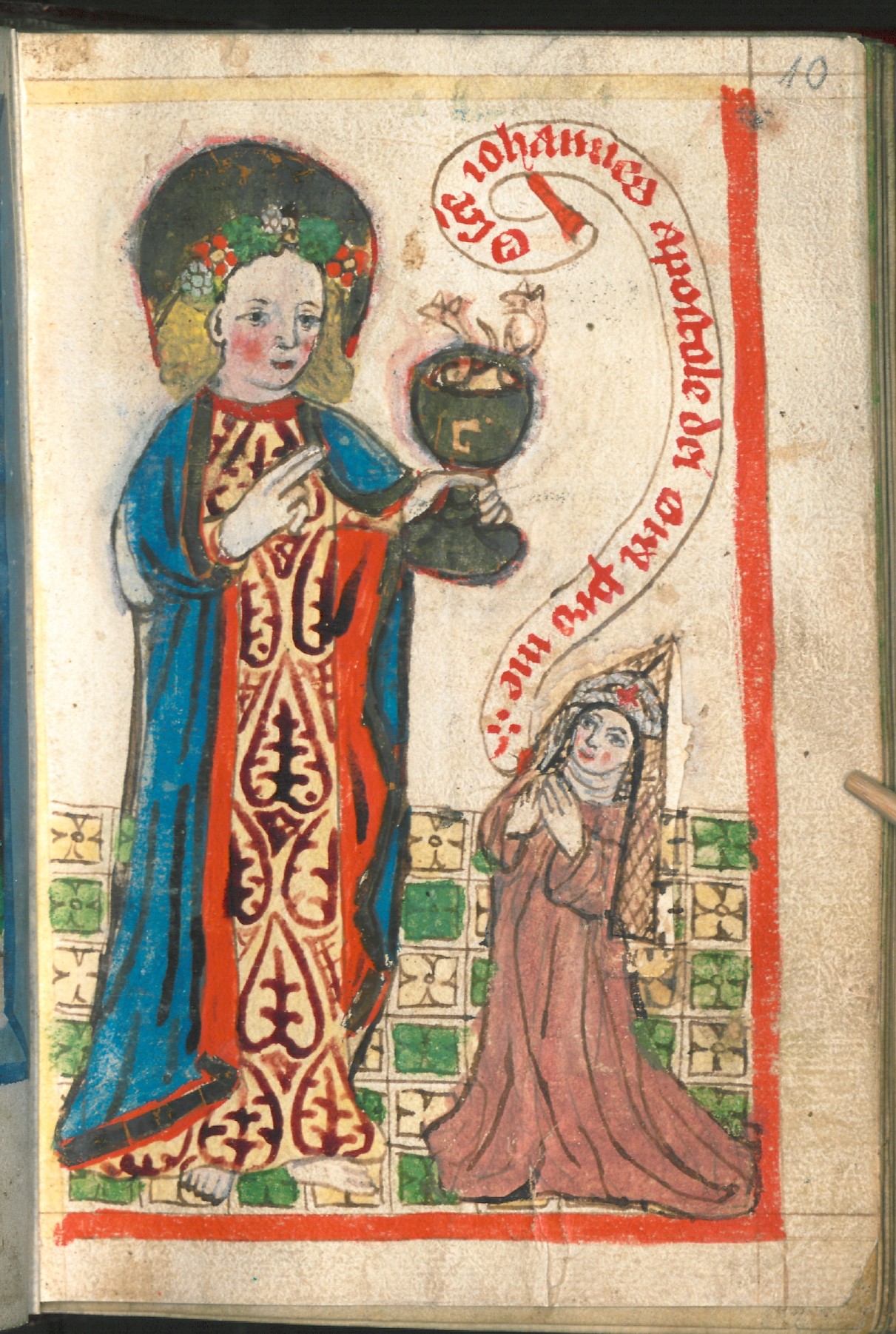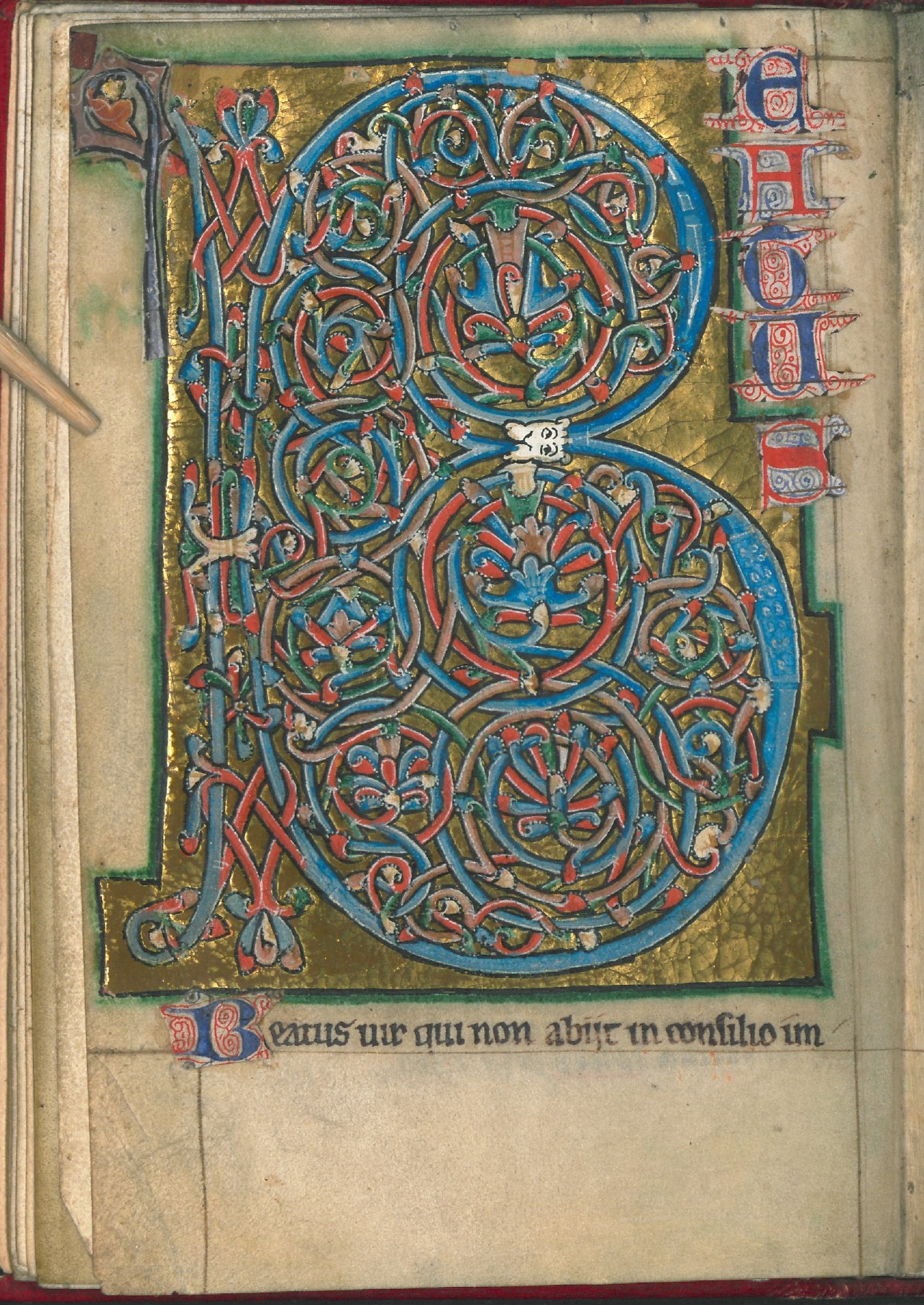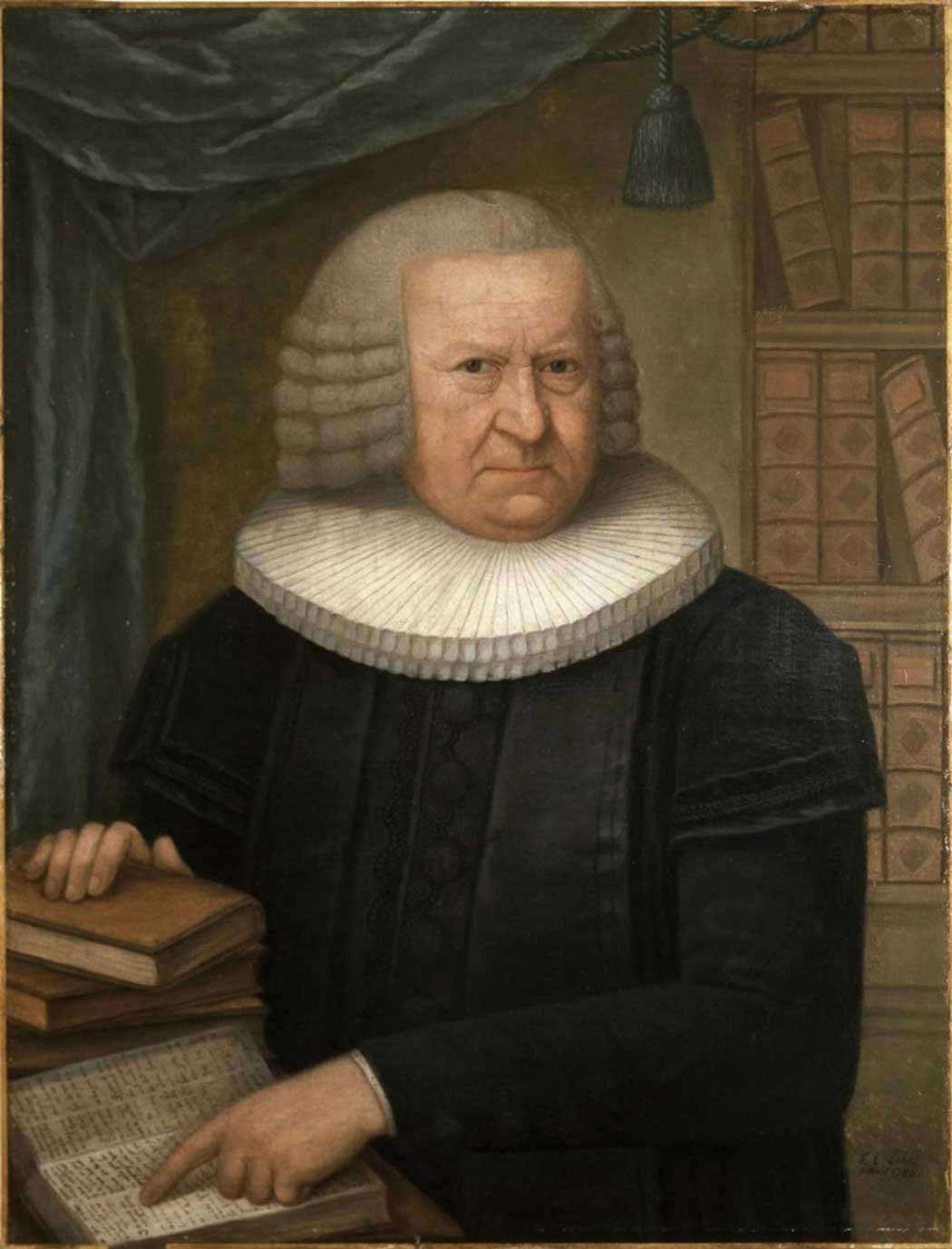Recycling and personalization
A Christian Prayer Book in the 15th Century
Anja Peters
Lesen Sie hier die deutsche Version dieses Texts.

SUB Hamburg
This small manuscript is a Latin Psalterium, a very common type of book in the Middle Ages. The main part contains the 150 Biblical psalms, preceded by a calendar and, from fol. 142r onwards, various hymns and prayers. Psalters were used both in church services and in private devotion. In everyday monastic life, the psalms were recited at the seven hours of prayer, and the entire Psalter was recited within a week, so that even monastic pupils and novices quickly learned it by heart. The handy format of this special Psalterium, only about the size of a postcard, speaks for its use as a personal prayer book.
The Psalterium came to what was then the Hamburg City Library with the Bible collection belonging to the Hamburg head pastor Johann Melchior Goeze (1717–1786). It probably originated from the Thuringian-Saxon region in the 13th century. It arrived at the Cistercian convent of Medingen in Lower Saxony, where it was reworked in various ways in the late 15th century to make the book (already about 200 years old at the time) meet the demands and tastes of a new owner. What did not fit the customs in Medingen was removed and replaced, for example the calendar. Calendars listed the most important festivals and holidays in an overview of the year, although their selection could vary greatly depending on the region, order and monastery. The new Psalterium calendar contained the feast days relevant to the new owner and her monastery. The Litany of All Saints from fol. 154v onwards was also edited and largely completely rewritten to address different saints, and the subsequent last two quires of the book with various prayer texts were added.

Interventions also took place at the level of book decoration. When the old calendar was removed, care was taken to preserve two gold-decorated miniatures of the Annunciation and the Nativity, which were connected to the calendar pages (fol. 1v, 2r). They were carefully reattached to the leaves of the new calendar with decorative stitches in red and green thread. Two new miniatures were also added: a leaf depicting the crucifixion from southern Germany, and a drawing of St. John the Evangelist, before whom a small nun in Medingen costume is kneeling and asking him, “ora pro me” (pray for me) (fol. 9v, 10r). The first abbess of Medingen, Margaretha Puffen (1452–1513), was also depicted on her gravestone with such a characteristically pointed veil, and it is quite possible that the owner of the Psalterium made this drawing herself and that the figure of the small nun is a self-portrait with her patron saint. She may also have been given the sheet by a friendly nun from a neighbouring monastery. There is evidence that the six so-called heath monasteries of Medingen, Wienhausen, Isenhagen, Ebstorf, Walsrode, and Lüne engaged in a lively exchange of letters, books, devotional sheets, and handicrafts from the late 15th century onwards as a result of the monastic reforms.

The pages of the Psalterium also show a very special form of editing: some small fragments from other manuscripts have been carefully pasted in. These are various types of decorated initials, which are clearly different in style from those of the Psalterium. Multi-coloured initials decorated with tendrils and ornamented with gold, as well as smaller, red-blue lombards, were carefully cut out of their original manuscripts and pasted in a suitable place over already existing initials at the beginning of individual psalms and into the text of the psalms. It can be assumed that these paste-overs were not random. They may have highlighted psalms and verses that were important to the owner. A few fragments of Gothic tendrils that match the pasted initials were also attached to three of the ten large, richly decorated initials of the division psalms – perhaps for pure decoration, but perhaps also as a touch-up for the older and partially rubbed-off initials. The full-page initial that introduces the first psalm was decorated both with tendrils and with alternating red and blue lombards that form the opening word of the psalm, “Beatus” (“blessed”) (fol. 11v).

The Psalterium was reworked in the second half of the 15th century, when monastic reform reached Medingen and the surrounding monasteries. This reform was intended to return the monasteries and their secularised way of life back to basic monastic principles. As a result of the reform, many old liturgical works were taken out of use and cut up so that their parchment could be reused for new books. The pasted initials may have been cut from such a discarded manuscript and recycled for the purpose of decoration.
Cod. in scrin. 149 is an old psaltery that was tailored to the needs and preferences of one or more new owners in terms of content and aesthetics. This makes it a very personal object that, if we explore its traces of use precisely, can reveal a great deal about its users and life in the monastery.
